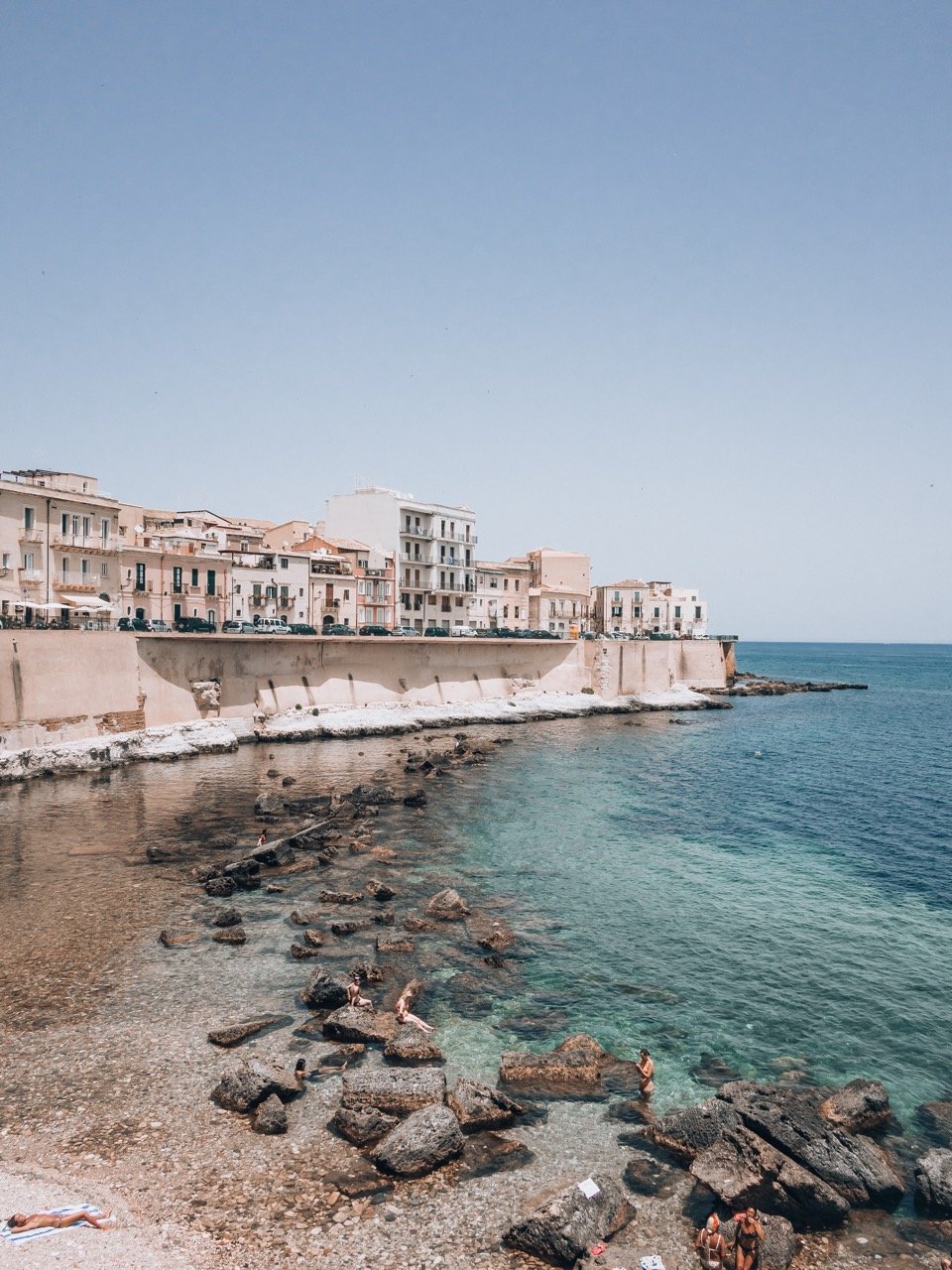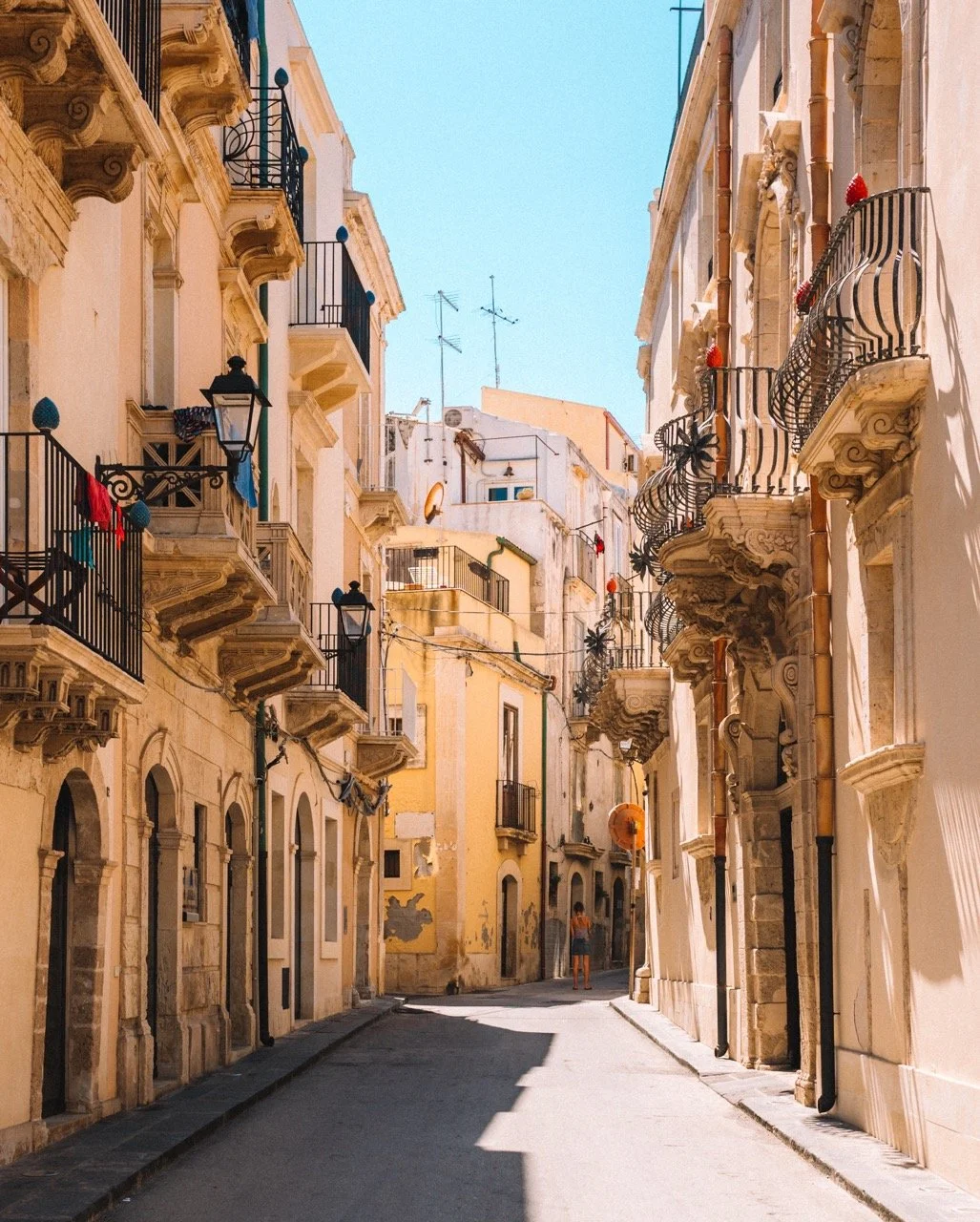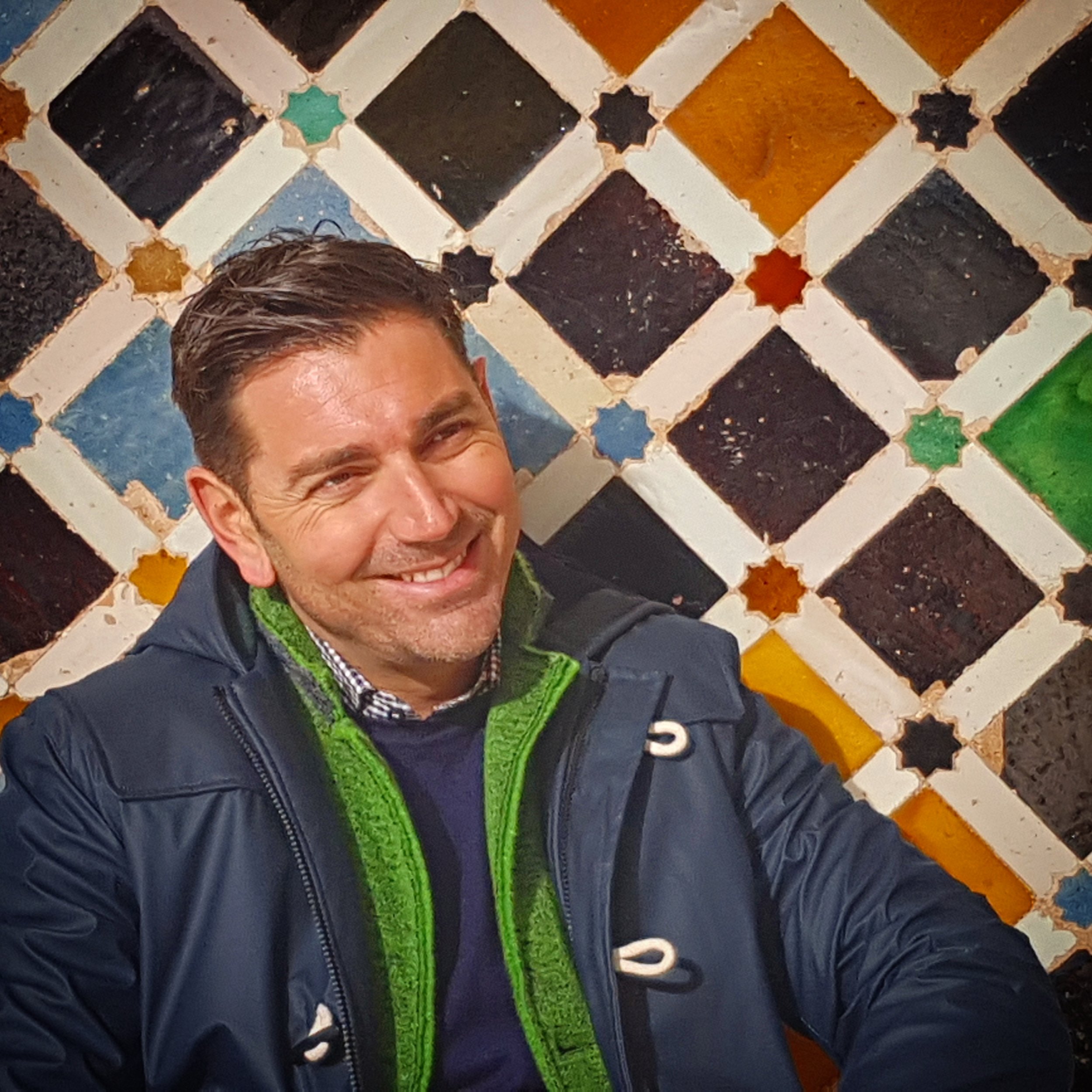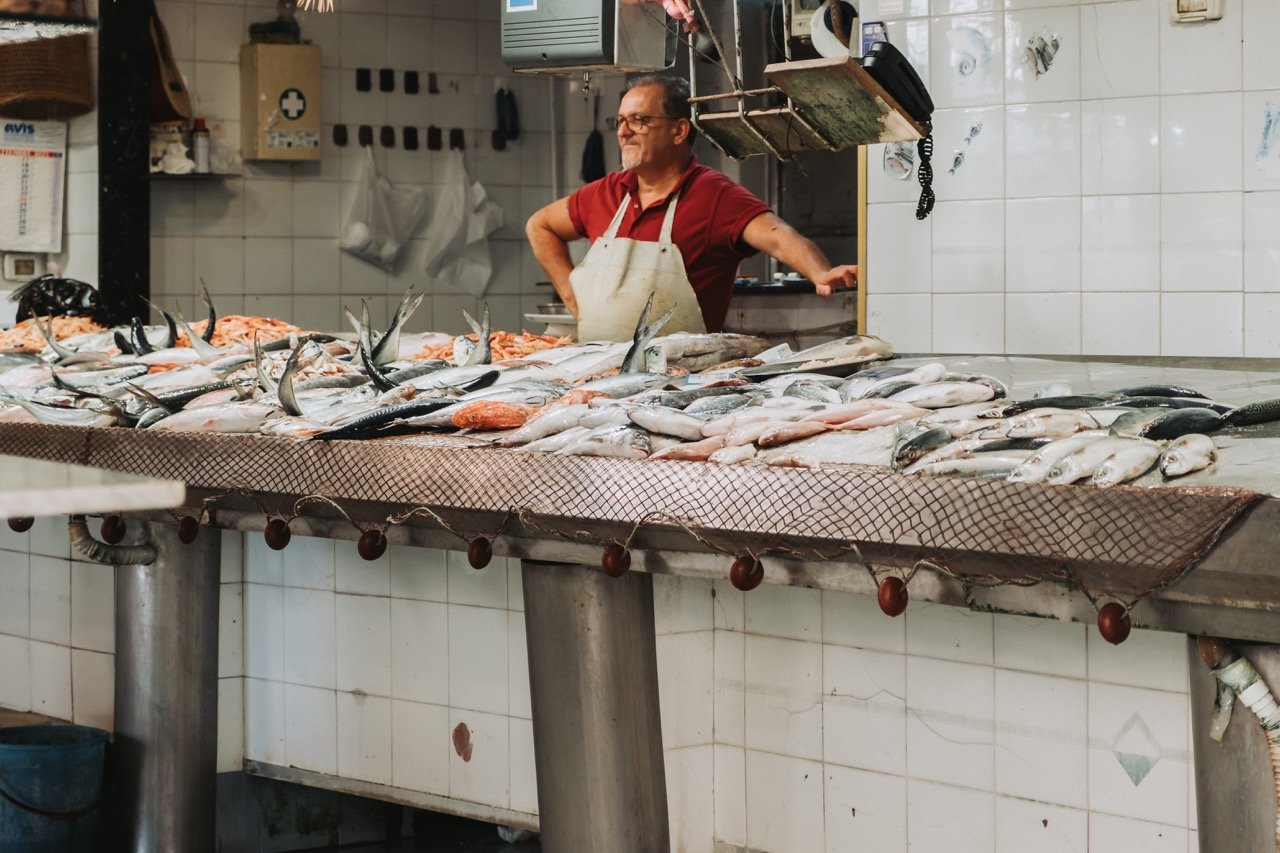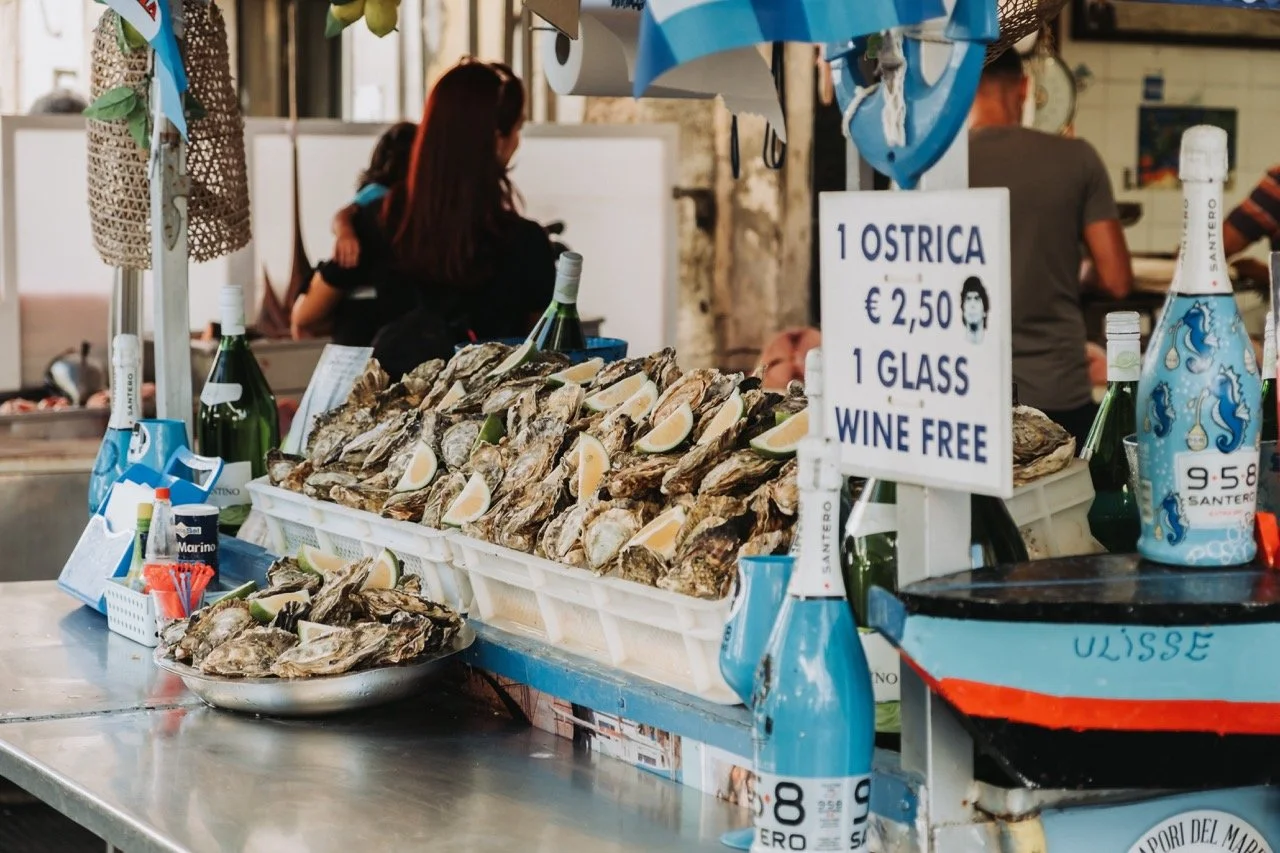A Local’s Guide to Syracuse & Ortigia, Sicily
Affiliate disclosure: some of the links in this article are affiliate links. If you book using one of them, we’ll earn a small commission. All of our info is free to read and free of ads, so we appreciate it!
The Romans used to call a large section of southern Italy Magna Graecia (Greater Greece) due to the Greek civilization that had established in the region. And Syracuse (Siracusa in Italian) was undoubtedly the most important city of Magna Graecia, a metropolis that was even larger than Athens.
Founded by the Corinthians in 734 BC, it had a population of over 300,000. The Latin writer Cicero called it "the greatest Greek city and the most beautiful of all."
After the Greeks, Romans, Byzantines, Arabs from North Africa, Normans, and Bourbons all left their mark. The architecture here spans centuries, and ancient ruins sit cheek-to-jowl with a maze of medieval lanes, centuries-old palaces, sumptuous Baroque squares, and even traces of Jewish presence.
Siracusa was also home to the famous mathematician and inventor Archimedes whose creations were used in defending the city against the Romans in 214 BC (spoiler: Romans won). Today, the city is a patchwork of architectural styles testifying to a history of more than 2,000 years.
Bear in mind that Ortigia (sometimes written as Ortygia) and Syracuse are the same city, even if they are referred to with different names. Ortigia is an island, and the oldest part of the city, connected to the mainland by two bridges.
Table of Contents
Syracuse planning cheatsheet
 Plan your itinerary with expert advice
Plan your itinerary with expert advice
- Book a Sicily travel consultation with a local expert
 My favorite hotels in Syracuse
My favorite hotels in Syracuse
- Grand Hotel Ortigia - old world style at this Ortigia institution. $300/night
- Algilà Ortigia Charme - elegant rooms in a Baroque palace. $250/night
- La Maison - boutique hotel in the center of Ortigia. $250/night
- Maecò Ortigia B&B - lovely guesthouse with a great location. $150/night
- B&B Marina di Ortigia - cheerful B&B overlooking the marina. $120/night
 Guided tours and activities
Guided tours and activities
 How to get around
How to get around
- Car rentals with DiscoverCars
- Train tickets from Trenitalia
- Bus routes at Interbus, AST, and BusBud


Where is Syracuse?
Photo: Hel-hama, CC BY-SA 3.0, via Wikimedia Commons
Syracuse lies on the southeastern coast of Sicily, between Catania and Ragusa. It is part of the Val di Noto, which has been included on the UNESCO World Heritage List since 2002 due to its amazing Baroque cities. It’s a perfect base to explore the Val di Noto area.
It’s 260 km away from Palermo, about 3 hours driving, but just an hour away from Catania. The city is located on the sea, near many natural and historical attractions such as ancient necropolises, emerald-like lakes, and the unmissable Noto.
The rural landscape around the city is mysterious and fascinating due to the canyons carved by the rivers. Taking advantage of the easy-to-work limestone, men built many necropolises around there.
Why visit Syracuse
Visiting Siracusa is a journey back in history via a city with two hearts. The ancient Greek city, called Neapolis, lies on the mainland while the Sicilian one, a place both ancient and modern, bustles on the island of Ortigia.
The Neapolis archaeological site offers an ancient theatre still in use (you can attend a Greek tragedy!), caves on a cathedral scale, and even a castle. These are some of the best preserved Greek ruins anywhere in Italy.
The little island of Ortigia is a beautiful pocket-sized maze of narrow streets that hide buildings built in a honey-colored stone. A long promenade runs all around its perimeter, gifting amazing sunsets.
For beach lovers, the stretch of coast all around Siracusa is home to some of the island’s very best sandy beaches.
How to get here
By plane
Catania Fontanarossa is the closest airport to Syracuse, about a 1-hour drive. Catania is connected to mainland Italy and European countries by many daily flights.
There are no direct flights from outside of Europe, so visitors from North America and beyond will need to make a connection.
By train and bus
From Catania, Interbus and AST run regular bus departures all throughout the day. The journey takes about 1.5 hours and tickets cost €7. Buses depart from both Catania airport and downtown Catania. You also have trains (Trenitalia) from Catania to Syracuse, with departures every couple of hours, every day. Tickets cost €9 and the trip takes just under 90 minutes.
From Noto, daily local trains and regular buses (AST and Interbus) connect to Syracuse. The bus is generally more convenient than the train. The journey takes 30 minutes.
From Ragusa, you have both trains and buses (AST) and the journey takes 2.5 hours. Both the train station and bus station are a bit outside Ragusa’s city center, but the train station is closer than the bus station.
From Palermo, departures are less frequent. The bus (Interbus with occasional Flixbus service as well) is a more convenient option than the train, which is much slower and has fewer departures. The bus journey from Palermo to Syracuse takes 3.5 hours, with no changes, and costs about €15.
Where to book train & bus tickets
I always recommend booking direct with service providers, especially for the train. When buying train tickets in Italy, there is no reason to ever use a 3rd party service.
However for the bus, it sometimes is easier to use an aggregator website/app. In Sicily, some companies run certain routes, but then don’t run others. Websites are typically only in Italian and often quite poorly designed. It can actually be rather confusing to navigate.
So, I often use BusBud to check what’s available. It shows routes from different companies along with pricing. You can then buy the tickets through the site (for a slight markup) or go direct to whatever companies they show available for the journey.
By car
Syracuse is 90 km from Catania and the drive, mostly done along the good E45 highway, takes just over an hour.
If driving here and staying in Ortigia, check with your accommodation about parking. If they don’t offer parking (most don’t), you can rely on two pay car parks at the entrance of the island at Marina and Talete. Ortigia is mainly pedestrian, so you won’t need your car during your stay.
Where to find a car rental
If you’re renting a car, know that there are lots of companies to choose from in Sicily, with widely varying prices and car conditions. You’ll find all the big international companies here as well as plenty of smaller locally-owned ones.
Siracusa doesn’t have a ton of rental agencies though, so you are better off picking up your car in Catania (or Palermo depending on how you’re arriving to Sicily) where you have more choice and better prices.
To check prices and book, I recommend using DiscoverCars. It’s a car rental website that includes offerings from all the major international rental companies as well as lots of smaller local agencies, which often have much better pricing. You can often find great deals.
By private driver
Private drivers in Sicily (and all of Italy) are called NCC, which means "noleggio con conducente” - rental with driver. You'll find private drivers available in most major cities and in some smaller towns that receive a fair number of tourists.
Because distances between many of Sicily's cities are large and you're likely to pass by places of interest between your starting and end point, many drivers offer the option of turning a simple transfer into a bit of a sightseeing tour by including stops along the way.
If you're looking for a private driver, we always recommend Roberto Alabiso who is based in Western Sicily but works all over the island.
Best time to visit
The best time to enjoy Siracusa is from late spring to early October. This is a region where you want to be able to enjoy the outdoors and beaches, and it's important to come when you’re sure that the weather will cooperate.
However, the Sicilian climate is blessed with sunny days for much of the year so you can enjoy wonderful holidays even between November and March.
Visiting in Spring
Sicilian Spring is very similar to Summer in terms of temperature, but the island is much less crowded, meaning that you get most of the benefits of good weather, with fewer long lines and packed sights.
Visiting in Summer
Although Sicily gets very hot over the summer, Siracusa is coastal and surrounded by good beaches. This means that you can sightsee in the mornings and late evenings, and relax by the sea during the hottest parts of the day.
Over the summer, Siracusa hosts two events that visitors love to participate in. From the end of May until early July, a series of classical plays are stage in the ancient theater. Then, in the end of July, Ortigia hosts the Sound System electronic music festival. In keeping with the city’s theme, one thing ancient, another modern.
Visiting in Fall
Summer weather in Syracuse often lasts through the middle half of the fall. Most years, you can still take a dip through October, with the added bonus of the midday heat not being so stifling as in months like July or August.
Visiting in Winter
A winter visit to Syracuse, and Sicily in general, can actually be quite pleasant. Because even winter temperatures on the coast are very mild compared to much of the Northern Hemisphere and we get relatively little rain, with the exception of swimming, you can still do much of what you would at other times of the year.
A December visit to Syracuse is particularly pleasant as you can soaking up the festive atmosphere. On December 13 visitors can watch a famous local religious procession where devotees follow the relics of the town’s patron saint Lucia, shouting Siracusana jè! (she is a Syracusan!).
How long to spend
Although Siracusa can be easily visited in a day, the city deserves more time. To enjoy it fully, plan on at least two days here.
Day 1
Spend your first morning wandering the Neapolis archaeological site and discovering this ancient city that rivaled Athens. Nearby is the Paolo Orsi Archaeology Museum which is worth a quick visit. After, have lunch in Ortigia, and then take a stroll around the island, marveling at centuries-old palaces and Baroque churches.
In the afternoon, attend a folk puppet show at the Teatro dei Pupi, then head to the marina and sip a drink while watching the sun set over the sea.
Day 2
Start your second day at the city’s market, then go underground to explore the stunning labyrinth of catacombs. In the afternoon, learn about the historical Jewish presence in Ortigia by visiting Europe’s oldest Mikveh (a sort of Jewish ceremonial bathhouse). Dine in a typical trattoria and finish the day tasting a gelato at Piazza Duomo.
If you have an extra day, explore the nearby beaches by bike or hop on a boat and discover the sea caves and hidden spots where to swim along the coast.
Where to stay
Ortigia is the obvious choice for where to stay while visiting Siracusa. The most important sights are there and it also offers the prettiest views with its narrow streets, whitewashed buildings, and its alluring setting on the sea.
One thing to keep in mind, though, is that Ortigia is very expensive. If you want to keep costs down, you should look at hotels in Syracuse mainland, not the island.
Grand Hotel Ortigia, just in front of the marina, has been an Ortigia institution since 1890. Old world style prevails with inlaid wood, plush furniture, and grand design. It’s also one of the only hotels in Ortigia with private parking. €250 per night.
Algilà Ortigia Charme Hotel is hosted in a Baroque palace with a medieval courtyard, mixing heritage and contemporary design. €200 per night.
La Maison is a lovely boutique B&B with just 5 rooms in the center of Ortigia. €200 per night.
Caportigia Boutique Hotel is actually in Syracuse and not Ortigia, but it’s a nice little hotel on a quiet street that is both walking distance to the train station and to Ortigia. Rooms are modern and well appointed. It’s a good option if you have a car and want to be able to park nearby. Nightly rate is around €150 per night.
Maecò Ortigia B&B is a small guesthouse in Ortigia center just steps from the Duomo. Rooms are spacious and well appointed and the hotel can arrange for valet parking right in Ortigia. €150 per night.
B&B Marina di Ortigia has only a few pleasant and cheerful rooms overlooking the marina. It’s good value and the views are great. €100 per night.
Maison Ortigia B&B is a modestly-priced option with bright rooms and a large terrace overlooking the sea. Some of the rooms have balconies. A room costs about €80.

What to see and do
1. Walk through history: temples, palaces, squares, and churches in Ortigia
Your exploration of Ortigia should begin at the Temple of Apollo, just over the Umbertino bridge that connects the island to mainland Siracusa. It is the oldest Doric temple in Sicily, built in the 6th century. Over millennia, it has been used as a church, mosque, basilica, and military barracks.
From there, head to the Fountain of Diana in Piazza Archimede which tells the myth of Alphaeus and Aretusa (more on that xbelow). All around the square, the varied architectural styles of the buildings sum up Sicily’s history, from the Middle Ages onwards.
Continue to Piazza Minerva, right behind the cathedral which was built over a 5th century BC temple of Athena. You can still see its ancient columns!
Nearby, the crescent-shaped Piazza Duomo, in front of the Baroque façade of the church, is lined by beautiful palaces. While in the square, take a look at Palazzo Vermexio, admire the church of Santa Lucia alla Badia, and visit the stunning Biblioteca Alagoniana which is housed inside the Palazzo Arcivescovile.
Two minutes away is the Galleria Regionale di Palazzo Bellomo, an art gallery housed in a 13th-century Catalan-Gothic palace. Inside the gallery, do not miss the stunning Annunciation painted by Antonello da Messina.
If you’re interested in a tour of Ortigia, you have quite a few options. There are too many to list, but here are 3 of the classics, all with excellent reviews:
Street food tour (my personal favorite - learn about the city while also doing some good eating!)
2. Fonte Aretusa and its legend
The Fountain of Arethusa (sometimes called the Arethusa Spring) is a natural, freshwater spring on Ortigia island.
Legend has it that the nymph Aretusa fled to Syracuse, trying to escape the advances of the god Alphaeus. Here, the goddess Diana transformed the nymph into a spring to save her from unwanted love. But Alphaeus turned into a river itself to join her forever. The freshwater spring is still there, surrounded by Europe’s only naturally-growing papyrus plants.
3. Two forts and a castle (plus a sunset aperitif)
As you walk around the road that encircles Ortigia, you’ll discover a couple of old forts overlooking the sea. Forte San Giovannello was part of the 16th-century fortification system. Along the Lungomare di Levante, you’ll stumble upon Forte Vigliena, a perfect photo spot over Ortigia.
On the very tip of the island lies the 13th-century Castello Maniace. It was built as a defensive fortification, a royal palace, and a prison.
After you’ve stopped by the 3 sites, continue your walk along the Lungomare Alfeo esplanade. On the western side of the island, you can stop to enjoy a magical sunset. Sit at one of the bars offering an aperitif or stroll along the Foro Vittorio Emanuele II.
4. The Ortigia market
The market is a dizzying array of stalls selling fish and seafood, seasonal fruit, vegetables, cheeses, olives, sundried tomatoes, cured meats, meat, and herbs. Vendors shout and gesticulate boisterously to attract customers. It is a smaller version of the most famous markets in Palermo or Catania, yet worth a visit.
Open daily from 7 am to 2 pm except for Sundays, it also offers several options to have a quick lunch tasting fresh oysters, a charcuterie board, and a cup of wine.
5. La Giudecca, the old Jewish quarter
Jewish people have been part of the local cultural landscape since the 1st century AD. The Ortigia Jewish quarter hosted 12 synagogues until Spain began its expulsion of the Jews in the 15th century. Because Sicily was under Spanish rule at the time, the Jewish population of the city was expelled.
Giudecca, the old Jewish quarter, is the most photogenic part of the island, thanks to its stone-paved alleys. In the quarter, you visit Europe’s most ancient mikveh, a Jewish ritual bath, that was discovered under an old palace while it was being converted into a hotel. Another mikveh was discovered buried deep beneath the church of Saint Filippo, where a synagogue once stood.
6. Attend a puppet show at the Teatro dei Pupi
Sicily has a rich tradition of puppetry inspired by French medieval poems. The little theatre in Ortigia holds regular puppet shows enacting tales of knights, princesses, and dragons. Down the road from the theater,, you can visit a small museum to learn more about the Sicilian puppet tradition and see the handcrafted pupi (puppets) up close.
7. Explore Siracusa’s Greek past: the Neapolis Archaeological Park
A few years after landing on Ortigia, the Greeks started expanding onto the mainland. Neapolis, now an archeological park, was one of the main neighborhoods of Syracuse during the Greek and Roman periods. The archaeological site includes a Roman amphitheater, the impressive quarry called Latomia del Paradiso, the Eurialo castle, and a massive Greek theatre built in the 5th century BC.
The theatre still hosts classical plays from the end of May to early July. If here during that time, you should buy a ticket and join local Syracusans crowding the cavea during a show.
Also do not miss the ear-shaped cave called Ear of Dionysius that amplifies the tiniest of noises. Legend goes that the tyrant Dionysius used it as a prison so that he could hear his enemies’ conversations.
The Paolo Orsi Archaeological Museum, one of the most prominent in Sicily, is 500 meters away from the Neapolis.
If you're interested in a tour, you have both private and small group options. Most tours are 1-2 hours long.
8. Wander mysterious catacombs
It might seem foolish to go underground while the warm sun shines over Syracuse’s countless beauties, but visiting the catacombs is entirely worth it. The Catacombs of San Giovanni extend under the roofless ruins of the Basilica di San Giovanni (another perfect photo spot!). They cover 10,000 square meters: a limestone labyrinth with frescoed crypts and never-ending tunnels.
Another huge early Christian complex lies underneath the Basilica Santuario di Santa Lucia al Sepolcro, a 17th-century church dedicated to the patron saint Lucia. It also houses a wonderful work by the painter Caravaggia, “The Burial of St. Lucia”.
9. Swim at some of Sicily’s best beaches
If you don’t want to leave the city, you can sunbathe and swim right in Syracuse at the little sandy crescent beach called Cala Rossa that is right under Ortigia’s walls. You can also take a dip at Forte Vigliena where metal stairs lead down to the rocks and water. In summer, a wooden deck is erected here to accommodate more bathers.
If you prefer a proper beach, many options are within a short drive of the city. Spiaggia dell’Arenella is a golden beach just 10 km away. You can reach it by car or bus (AST € 2.50 round trip). Fontane Bianche offers white sand 18 km from Syracuse. Marchesa del Cassible is a wilder beach just south of Fontane Bianche where there are no sunbeds or lidos. Ognina is a rocky coast best for snorkeling.
10. Enjoy Syracuse by boat
If you are keen to enjoy a different perspective on the city, hop on a boat and go explore the coast. Boat tours depart from Ortigia and typically last 1-2 hours, cruising past the town's walls and along the coast, visiting some sea caves and making a stop for a swim.
There are lots of operators and you can just book a ride at any of the stalls/kiosks around the port.
If you want to book in advance, here are a couple of options:
11. Get active and enjoy the coast by bike: Rossana Maiorca bicycle lane
Rent a bike and cycle along the 6 km former railway track, just 2 km north of Ortigia. The track starts from Piazza Cappuccini and you can also follow it on foot if you don’t feel like biking.
Along the way you’ll see dramatic cliffs, an ancient Greek port, hidden swimming spots, stone quarries, strangely shaped rocks, World War II bunkers, and an old tonnara linked to the old tradition of tuna fishing.
12. Day trips from Syracuse: Pantalica Necropolis and Plemmirio protected marine area
Hike along the largest Mediterranean necropolis with over 5000 13th-century tombs at the Pantalica Necropolis (27 km from Syracuse). The site is crossed by the Anapo and Calcinara rivers and hosts the ruins of Anàktoron, an ancient palace. Lace up your trekking boots and follow the main path traced from an early-1900s railway (about 4 hours of walking).
You can also dive in the protected Plemmirio marine area about 10 km south of Syracuse. The rocky peninsula is dotted with pretty coves. For a really run experience, you can rent a bike or an e-bike and bike from Syracuse, enjoying a full 25 km route around the area. Best photo spots are at Pillirina beach, Scoglio dell’Elefante, and the lighthouse at Capo Murro di Porco.
The Baroque towns of the Val di Noto are also within an easy drive of Syracuse, and you can easily fit visits to 3 towns into a single day.
A bit further away, you can also visit places like Taormina, Mt. Etna, and Catania as long as you’re prepared for a long (but rewarding) day.
Because of the popularity of the book and tv series, you’ll also find guides who do themed “Inspector Montalbano” tours that visit locations featured in the book (and series).
If you’re interested in a private day trip, local guide Paolo Mortellaro is excellent and offers tours all around Southeastern Sicily.
Foods to try
Being a seaside town, Syracuse is the right place to taste fresh fish and seafood. You can also indulge in some fabulous traditional Sicilian dishes. Visiting Syracuse is always a joy for palate in addition to the eyes.
To not just try local specialties, but also learn to prepare them yourself, you can take a cooking class with a local chef. These are the two experiences that I recommend:
Teresa offers the class in Arenella, a town about 15 minutes from Syracuse. If you don’t have a car, she can arrange a transfer for a reasonable fee. Maria Rita runs the class in Syracuse proper from her home overlooking the Neapolis archaeological site. You can’t go wrong with either.
Caponata: Pan-fried sweet and sour veggies with raisins and pine nuts.
Pasta che sardi: Pasta with sardines, breadcrumbs, capers, and freshly grated lemon zest.
Pizzòlo: This local pizza was born in the town of Sortino (inland from Syracuse), but you can find it throughout the greater Syracuse area. It is a pizza sandwich traditionally stuffed with cheese, pepper, oregano, and olive oil, but you can choose a variety of fillings, including some sweet options.
Cannolo in a cone: The local pastry shop Cannoli del Re serves their cannoli in a cone, not in the traditional fried shell, to make it easier for you to eat while strolling around. Choose your filling and test the design for yourself! Who ever said that German engineering was Europe’s best?!
Brioche filled with gelato: Instead of a classic ice cream cone, try a brioche with gelato inside. Voglia Matta offers the best ice cream in Syracuse. If you want to compare, try the pistachio or the ricotta gelato at Il cucchiaino.
Restaurants & dining
Fratelli Burgio, at the far end of the daily market, serves charcuterie boards accompanied by good wine.
Caseificio Borderi entertains you their diners by singing and engaging with the crowd while they prepare your fresh-made sandwich filled with typical Sicilian products.
La Lisca is the place to go if you’re looking for fresh fish. Do not miss their tuna tartare.
A putia delle cose buone delights with home-style food and a nice atmosphere. Portions are generous. Try the traditional Fedora cake.
Sicilia in Tavola is a good, old-fashioned trattoria with unpretentious yet authentic Sicilian dishes. Octopus salad with potatoes and lemon cake are not to be missed.
Schiticchio serves high-quality pizzas inspired by Sicilian places using local ingredients. I warmly, and hungrily, recommend the Levanzo.
Siculish United Tastes of Sicily has a broad selection of local wines and very tasty food. Their bestseller is the seared tuna wrapped in pistachios.
Boats is a nautical-themed bar (surprise, surprise) offering a good drinks list and a vast vinyl collection to listen to while sipping a cocktail.
Cortile Verga is an unmissable place to chill out sipping a drink while listening to the piano in an 18th-century courtyard.
MOON is a buzzing restaurant offering mainly vegan versions of local dishes with innovative twists.
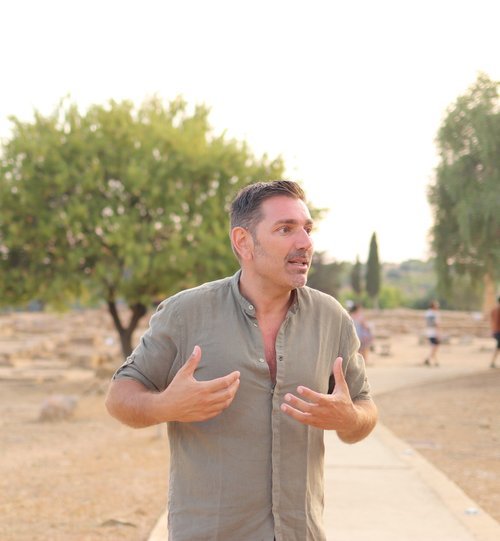

More Sicily travel info
For more advice on planning your trip to Sicily, check out some of our other guides and itineraries!
Regional info
City guides
Archaeological sites
Islands & nature
Tours

Gaetano Salemi
Sicily Expert based in Palermo
Ciao ragazzi! 👋
Hi, I'm Gaetano, and I've been a tour guide and travel consultant here in Sicily for the last 24 years. If you're looking for some local advice on your trip, I'd love to help!
Learn more Book a consultation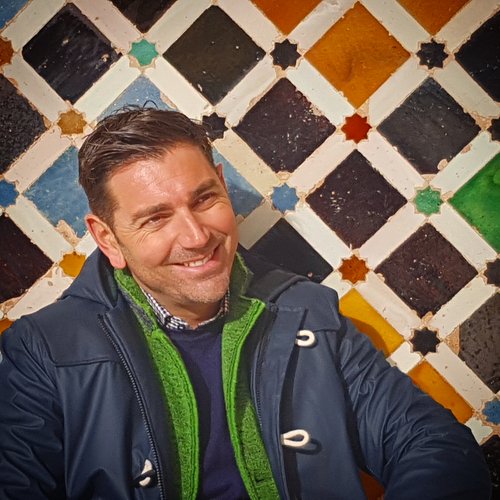
Connect with Gaetano
